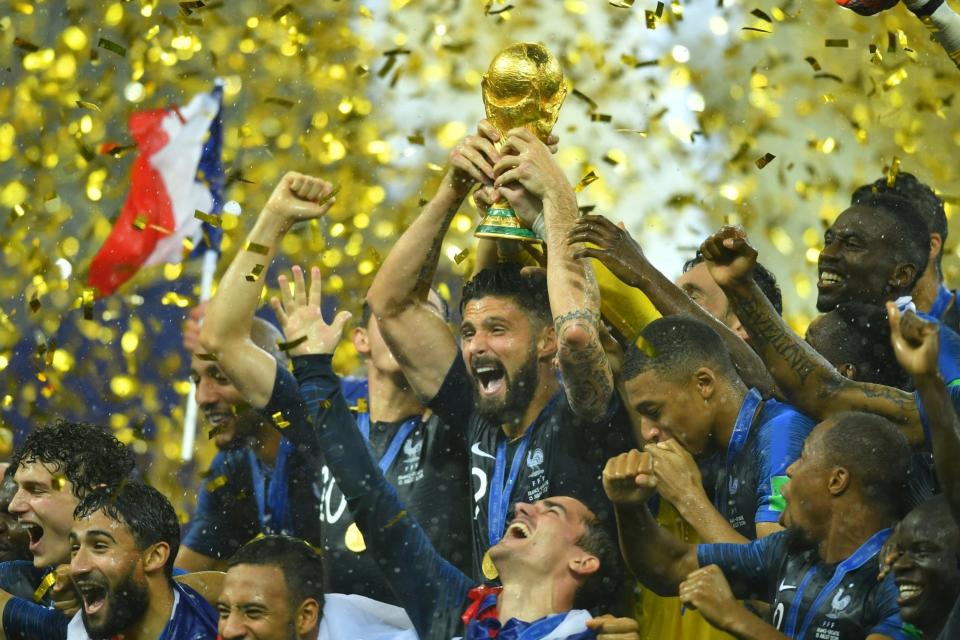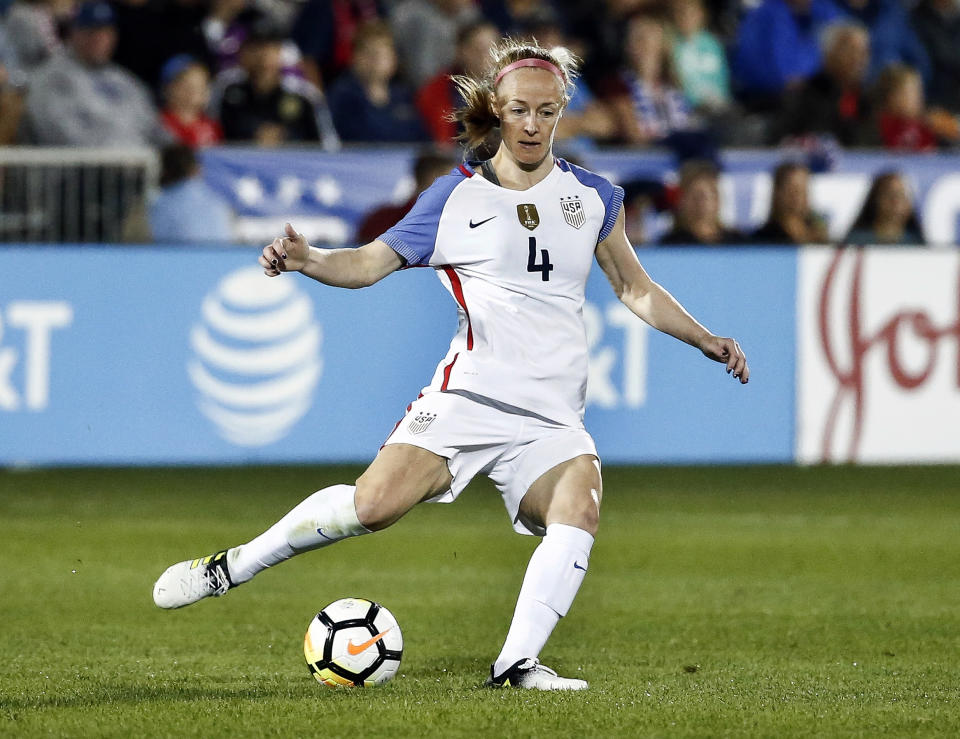U.S. soccer star Megan Rapinoe: 'FIFA doesn’t show they really care about the women’s game'

Megan Rapinoe and Becky Sauerbrunn are representing Team USA Saturday night with a berth for the 2019 World Cup on the line.
That isn’t stopping them from drawing attention to the pay gap between the World Cup and the Women’s World Cup though.
On Thursday night, Sports Illustrated and Fox Sports TV reported that FIFA would double the total prize money for the Women’s World Cup, from $15 million in 2015 to $30 million in 2019.
That wasn’t enough to satisfy veteran Rapinoe who said $15 million wasn’t enough to show that the governing body truly cared about growing the women’s game. She wanted to see more meaningful action being taken as opposed to an arbitrary purse increase.
“I think they’re probably looking for pats on the back for the increase, and they’re not getting any from here,” Rapinoe said. “I said this maybe last year: That FIFA doesn’t show they really care about the women’s game. That’s not to say they don’t do anything. They obviously do things for the women’s game. But in the way they truly care about the men’s game, they don’t truly care about the women’s game.”
The men made what?
Thirty million in prize money isn’t chump change. Unless of course you’re comparing it to the 2018 World Cup, which had $400 million in total prize money.
Each men’s team was guaranteed $8 million for making the tournament and earned $16 million if it made the quarterfinals.

Champion France left Russia with the trophy and a cool $38 million in prize money.
Possible solutions?
Sauerbrunn pointed out that although the women’s prize money increased from tournament to tournament, the men’s increased as well, widening the gap between the two from $342.1 million to $370 million.
The defender went on to offer solutions on how to close the gap by incentivizing teams to support not only their men’s teams but their women’s programs as well.

“They should probably over-incentivize so that the gap which is getting bigger actually closes faster. And if that were to happen, to make sure that the money that does go to those federations actually goes to making the women’s programs better,” Sauerbrunn said. “So do I think FIFA increasing their prize money for the women by 100 percent is good? It’s not good enough. Not even close.”
Revenue discrepancy
The biggest argument for the pay discrepancy is the revenue each World Cup and the teams competing generates.
The 2018 FIFA World Cup generated more than $6 billion in revenue – the nonprofit organization reported that it would have $100 million in profits as well as $1.7 billion in cash and assets by the end of 2018.
The women’s tournament consistently yields far less. In 2011, the tournament in Germany had $73 million in revenue – a record for the women’s tournament.
More from Yahoo Sports:
• 49ers apologize for Kaepernick photo snub
• A-Rod pays the ultimate price after losing bet
• Brewers pitcher’s stunning home run off Kershaw
• NLCS Game 1 shows what baseball is in 2018

